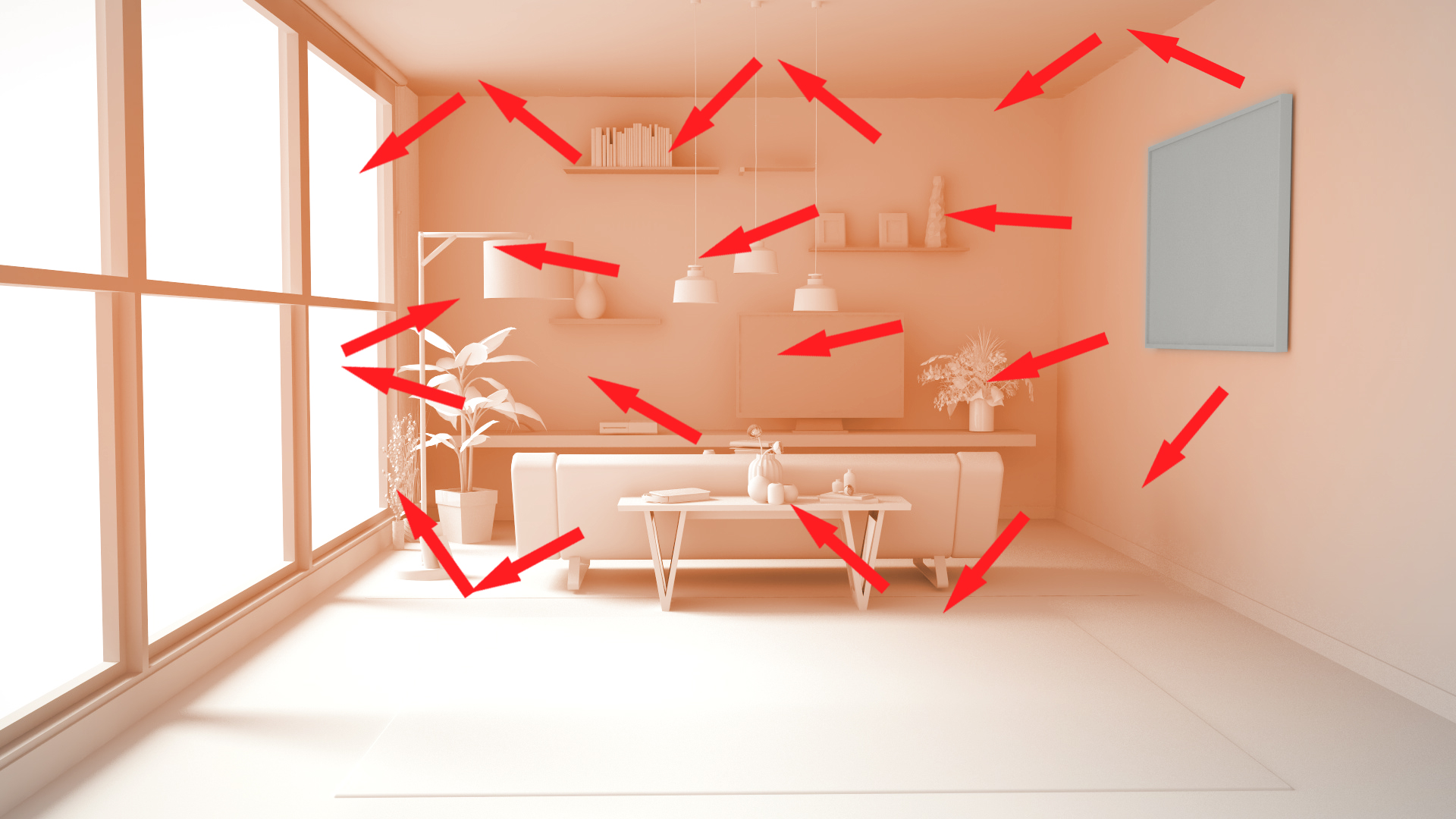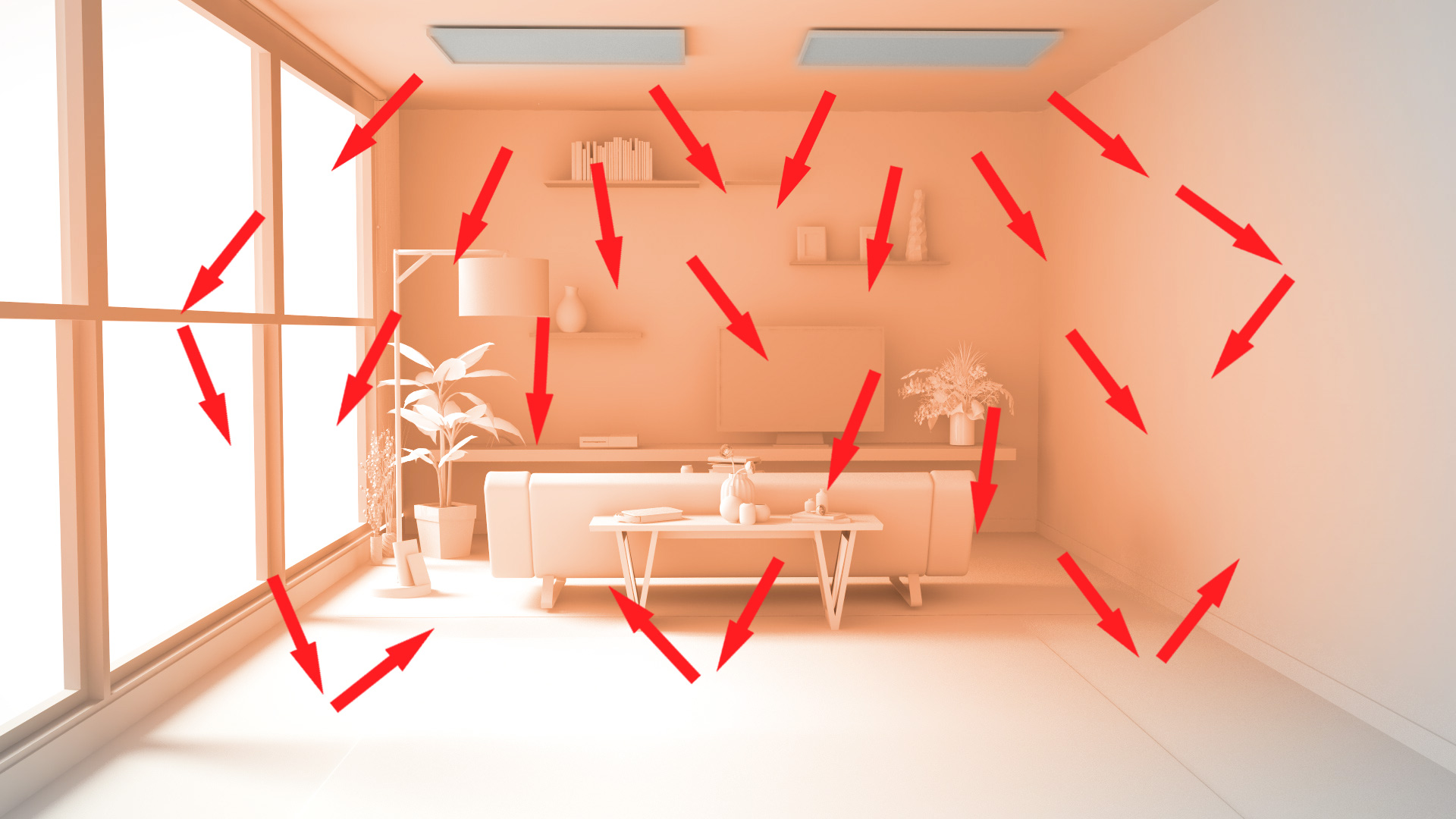For a technology that’s relatively new, Infrared Heating certainly is taking off here in the UK. More and more people are starting to read up on the subject. And, when they discover the advantages and benefits it will bring to their lives, they’re switching from more traditional forms of heating and embracing it wholeheartedly.
However, for every person who buys an IR Heating Panel from us here at Surya Heating, we have many more contacting us to ask how safe this new type of heating is. This is a natural reaction to any new and emerging form of technology, and we’re only too happy to provide as many answers as there are questions, so here are some of the most frequently-asked.
Q: Are Infrared Heaters Safe?
A: The simple answer to this question is yes. They are 100% safe!
Q: What Is Infrared Heat?
A: IR Heating Panels are what’s known as “Radiant Heaters” which means they emit waves of electromagnetic radiation. Now you might think this sounds a bit scary, but actually it’s very safe.
While it’s true that some forms of EM Radiation like ultraviolet and x-rays can be harmful, infrared is the same type of wave that our own Sun employs to heat the Earth.
Remember that visible light (the light we can see) is also a type of electromagnetic radiation and this, like infrared, is 100% safe too.
Q: How Do Infrared Heating Panels Work?
A: Unlike traditionally used convection heaters which heat the air that’s right next to the heater itself, infrared heaters radiate out their waves to heat the objects in a room. That doesn’t just mean the table, the bed and the shelves, it also means humans as well!
Convection is a wasteful method of heating a room, as the air it heats simply expands and rises to the ceiling, before cooling and completely dissipating. This causes pockets of cool air to form in a room which, while completely defeating the object of a heating system, also lead to damp and the formation of mould.
Because infrared panels heat the room’s objects and not the air, the heat they produce is constant and not fluctuating, leading to a more pleasant, thoroughly heated-through feel that’s generally more comfortable.
As regards health and safety, the constancy means that infrared heating will retard the growth of mould that’s caused by dampness, which is good news for those with asthma and other respiratory problems.
The reduction in rising, heated air, and falling, cooling air also means there’ll be a lot less dust in circulation. Therefore allergy sufferers will benefit and the atmosphere won’t ever become uncomfortably stuffy.
Q: So What Are Near And Far Infrared?
A: You may have heard the phrases Near and Far Infrared. These are two completely different types of infrared wave and they’re definitely not to be confused.
Infrared heating panels are an example of the Far Infrared type, which means the waves they emit will travel a distance to cause a target or obstruction to be warmed.
Near infrared on the other hand is the kind emitted by our IR Patio Heaters, and produces heat that’s a lot more intense and penetrative as it uses a shorter wavelength.
Q: Where Can I Safely Install My Infrared Panel Heaters?
A: As with all types of heater, the surface of an Infrared Panel Heater becomes hot during operation. This temperature is around 70° to 90°C, so it isn’t hot enough to actually burn anyone touching the panel’s surface, but sufficiently hot to give them a jolt of surprise.
Therefore it makes good sense to install your IR panel out of the way, so as to minimise any potential danger to children. Fortunately Surya’s Infrared heating panels are designed to be mounted either on a wall or on a ceiling, while others can simply be placed within a suspended ceiling’s grid.
Incredibly simple to install, they’re supplied with robust aluminium brackets on their rear side, allowing you to affix them safely and securely to pretty much any flat surface you choose.
The different types of Surya IR heating panels are suitable for a wide variety of applications, however, you may find that some blend into certain locations more naturally than others.
For example, any from our wide range of pre-printed Image IR Panels will look excellent and be extremely safe when installed on one of your walls, giving you a choice that ranges from a setting Sun view to a City rush scene.
Our Custom-Printed IR Panels will also enable you to simultaneously decorate your wall and heat your room, only with these you’ll be able to choose to have any image you like printed on your panel.
As with all our IR panels, both these types create heat in the same revolutionary way as you’ll see from this infographic:

Many people choose one from the Classic White IR Panel range to install on their ceiling. Boasting a pristine white finish, these IR panel heaters will blend in discreetly and unobtrusively with any white ceiling, and will be safely out of the way of tiny hands.
The Premium Frameless models will just drop into place in a suspended ceiling, operating in exactly the same way as the wall-mounted varieties:

Q: Are Your IR Panel Heaters Tested For Safety?
A: Yes, they are.
Due to the fact that our IR heaters are used in both domestic and commercial environments, they’re extensively tested and all carry the CE mark, proving that they’ve undergone all the necessary safety checks.
Also RoHS (Restriction of Hazardous Substances) checked, all of our Infrared heating panels are fully tested and certified to prove they contain no harmful or dangerous materials.
Give Us A Call
Hopefully, this information has helped to allay all your concerns about the safety of Infrared heating, but if you’re still in any way unsure, please don’t hesitate to contact us.
Our friendly and highly-trained customer service advisors will be happy to speak with you about any aspect of infrared heating and can be reached by calling 0116 321 4124.
You can also send us an e-mail enquiry to sales@suryaheating.co.uk, like our Facebook page and follow us on Twitter.





